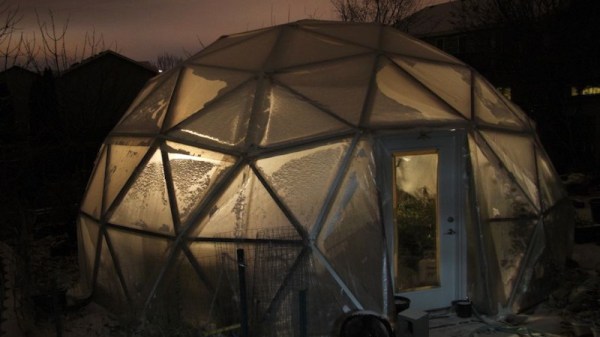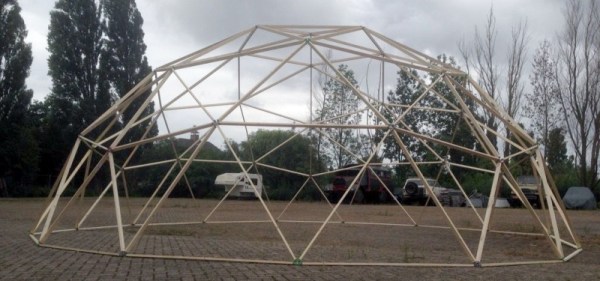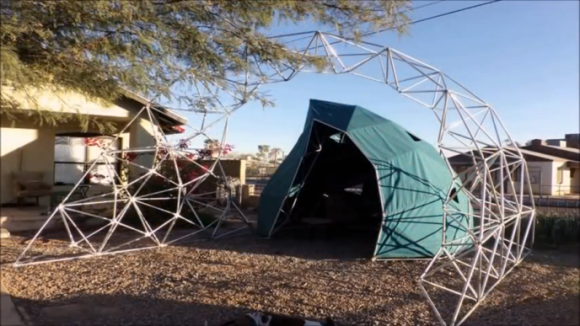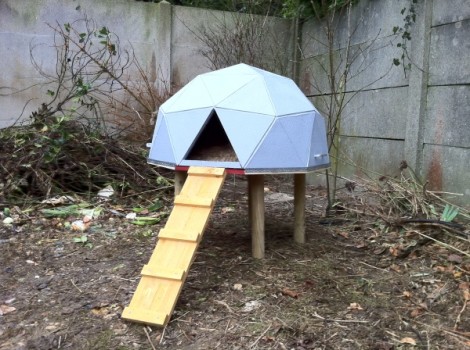Greenhouses are a great way to improve conditions for your plants, and are an absolute necessity for any serious gardening in colder climates. When the time came for [gentleworks] to build a new greenhouse, rather than going with a conventional design, they decided to go with a geodesic dome instead.
The greenhouse uses a few techniques that will be unfamiliar to those used to run-of-the-mill carpentry. The individual cedar struts meet at a series of hubs, constructed out of short lengths of Schedule 80 PVC pipe. The struts are attached to the pipe with steel straps, screwed into place. This doesn’t give the strongest of holds, but as most of the loads on the struts are compressive in nature, it works well in practice. Plastic sheeting is used as a covering to help let in plenty of light while keeping the cold out. The greenhouse is also heated, and can maintain a 40 deg F temperature differential with 14,000 BTUs.
It’s a build that has us wanting to throw up a dome or two in our own backyard. We’ve seen other geodesic structures before; if you’re working on one yourself, be sure to drop us a line.
















